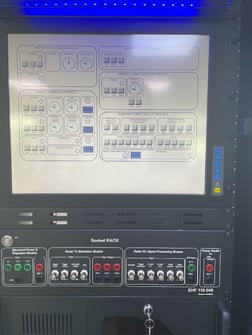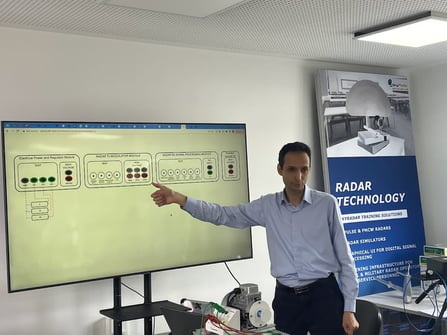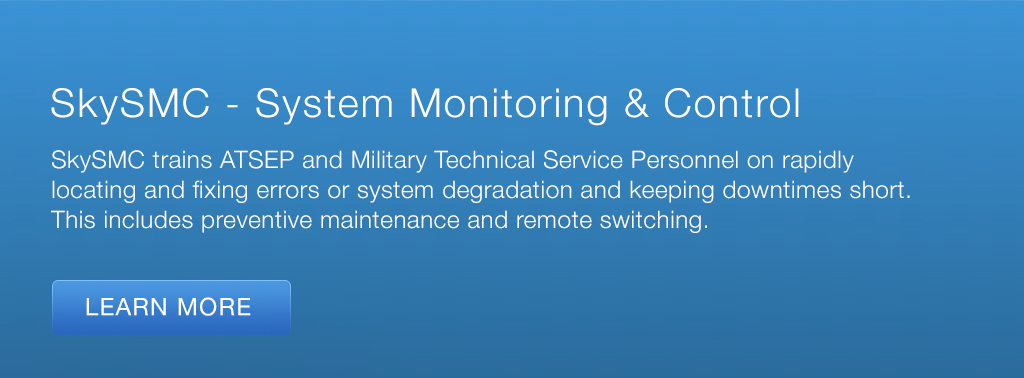Air Traffic Control (ATC) is a vital component of aviation safety, responsible for managing and guiding aircraft in the airspace. However, false targets in the context of processing errors pose a significant challenge to ATC operations. This article aims to explore the impact of false targets on ATC services, provide a definition, present examples, and discuss scenarios that highlight their consequences.
Definition of False Targets
False targets in the context of processing errors refer to inaccurate or misleading information presented to air traffic controllers during the aircraft tracking and surveillance process. These errors can result from technical glitches, radar anomalies, misinterpretation of data, or human mistakes. False targets may manifest as phantom aircraft, incorrect position reporting, or erroneous flight plans, among other forms.
Example of False Targets
To illustrate the concept further, let's consider an example. Imagine an ATC radar system detecting an aircraft flying in restricted airspace without authorization. However, upon further investigation, it is revealed that the radar system erroneously identified a flock of birds as an aircraft due to a processing error. This false target could mislead air traffic controllers into believing the presence of an unauthorized aircraft, potentially causing unnecessary panic, disrupting operations, and triggering the deployment of emergency protocols.
Scenarios Illustrating the Impact of False Targets on ATC Services
Scenario 1: Radar Anomalies and Misjudgment
In this scenario, a radar system experiences intermittent glitches that generate false targets. Air traffic controllers heavily rely on radar data to track and monitor aircraft positions. However, due to processing errors, the system occasionally displays additional blips on the radar screen, indicating non-existent aircraft. This leads to confusion and misjudgment, diverting controllers' attention and resources toward false targets instead of focusing on real aircraft. Consequently, the efficiency of ATC services is compromised, delays occur, and the risk of overlooking genuine threats or collisions increases.
Scenario 2: Misidentification and Communication Errors
In this scenario, a processing error occurs during the identification process, leading to the misidentification of aircraft. Air traffic controllers rely on accurate identification to provide appropriate instructions and ensure safe separation between aircraft. However, if a processing error causes the system to misidentify an aircraft or confuse its position, it can result in incorrect instructions being given to pilots. For instance, controllers may instruct an aircraft to descend or turn based on the false target's position, potentially leading to a loss of separation with other aircraft. Such errors can cause confusion, increase the workload for controllers, and compromise the overall safety of ATC operations.
Factors Responsible for False Targets
Technical Glitches
Technical glitches in air traffic control systems can contribute to the generation of false targets. These glitches can occur due to software bugs, hardware malfunctions, or communication errors. For example, a malfunctioning algorithm or a faulty sensor may produce erroneous data, leading to the identification of false targets.
Radar Anomalies
Radar systems are susceptible to anomalies that can result in false targets. Factors such as electromagnetic interference, atmospheric conditions (such as rain or snow), or reflections from nearby objects can distort radar readings and generate false targets on the display. These anomalies can mislead air traffic controllers and affect their decision-making process.
Data Interpretation
Misinterpretation of data by air traffic controllers can also contribute to the occurrence of false targets. Factors such as high workload, distractions, or lack of situational awareness may lead to errors in data analysis and assessment. This can result in false targets being perceived or incorrect identifications of aircraft positions.
Human Factors
Human factors play a significant role in the occurrence of processing errors and false targets. Fatigue, stress, inadequate training, or complacency can impact the accuracy and reliability of data interpretation, leading to the generation of false targets. Human errors in inputting or interpreting information can propagate through the system and produce misleading data.
System Updates and Maintenance
Changes made to air traffic control systems, including software updates or maintenance procedures, can introduce temporary glitches or errors. These changes can inadvertently lead to the generation of false targets. It is crucial to thoroughly test and validate system updates to minimize the risk of processing errors that result in false targets.
Environmental Factors
Certain environmental factors can contribute to the occurrence of false targets. For instance, weather conditions such as heavy precipitation or dense fog can obstruct radar signals and lead to false target indications. Similarly, geographical features like mountains or tall structures can cause radar reflections that produce false targets.
Sensor Limitations
The limitations of sensors used in air traffic control systems can contribute to false targets. Sensor accuracy, resolution, or range limitations may result in the misidentification of objects or the creation of false targets. It is essential to understand the capabilities and limitations of sensors and employ appropriate techniques to minimize the impact of false targets.
Some common types of False Targets
Phantom Aircraft
Phantom aircraft are false targets that appear on radar screens but do not correspond to the presence of an actual aircraft. These false targets can be generated due to technical glitches, radar anomalies, or misinterpretation of data. Phantom aircraft can mislead air traffic controllers and potentially lead to unnecessary actions or disruptions in the airspace.
Ghost Echoes
Ghost echoes are false targets that result from radar reflections caused by environmental factors or nearby objects. These reflections can create additional blips on the radar display, indicating the presence of aircraft that do not actually exist. Ghost echoes can occur due to atmospheric conditions, such as rain or snow, or reflections from tall buildings, mountains, or other structures.
Clutter
Clutter refers to false targets generated by radar systems when they detect and display non-aircraft objects. This can include birds, insects, weather phenomena (like rain or hail), or even ground clutter from buildings or terrain. Clutter can clutter up the radar display and potentially obscure or confuse genuine aircraft targets.
Radar Angels
Radar angels are false targets that appear on the radar display as a result of interference or technical issues. They often take the form of arcs or circles and can be caused by factors such as malfunctioning radar equipment, signal distortion, or radio frequency interference. Radar angels can distract air traffic controllers and lead to inaccurate assessments of the airspace.
Multipath Propagation
Multipath propagation occurs when radar signals bounce off various surfaces before reaching the receiver, resulting in the creation of false targets. This phenomenon can be caused by atmospheric conditions, geographical features, or reflective surfaces. Multipath propagation can cause misleading indications of aircraft positions, leading to processing errors and false targets.
Anomalous Propagation
Anomalous propagation, also known as ducting, is a phenomenon where radar signals follow an abnormal path due to atmospheric conditions, resulting in the detection of false targets. This can occur in areas with temperature inversions, where radar beams are refracted and trapped, leading to the appearance of non-existent aircraft targets.
Transponder Misinterpretation
Transponders are devices onboard aircraft that transmit signals to air traffic control systems, providing information about the aircraft's identity, altitude, and position. However, errors or misinterpretation of transponder signals can lead to false targets. For example, incorrect altitude reporting or malfunctioning transponders can result in false target indications on the radar display.
Impact of False Targets on Air Traffic Control Services
Safety Concerns
False targets caused by processing errors pose a significant safety risk in air traffic control services. They can lead to confusion among air traffic controllers and pilots, potentially resulting in incorrect instructions or evasive maneuvers. This increases the likelihood of mid-air collisions or incidents of aircraft entering restricted airspace.
Operational Disruptions
False targets disrupt the normal flow of air traffic operations. Air traffic controllers must devote additional time and effort to differentiate between genuine aircraft and false targets, leading to increased workload and potential delays in providing instructions to pilots. This can result in inefficiencies, reduced capacity, and disruptions to flight schedules.
Increased Workload for Air Traffic Controllers
False targets add to the workload of air traffic controllers, as they must constantly monitor and assess the accuracy of detected targets. This can lead to heightened stress levels, decreased attention, and potential errors in managing the overall traffic situation. The increased workload may also affect the controller's ability to effectively handle genuine traffic and emergency situations.
Reduced Situational Awareness
False targets can create a distorted perception of the airspace, making it challenging for air traffic controllers to maintain accurate situational awareness. This loss of situational awareness can compromise the ability to detect genuine threats or conflicts, increasing the risk of incidents or accidents.
Communication and Coordination Issues
False targets can result in communication and coordination challenges between air traffic controllers and pilots. Controllers may issue instructions based on false targets, leading to confusion and potential conflicts among pilots who are unaware of the false nature of the targets. This can hinder effective communication and compromise the overall safety and efficiency of air traffic control services.
Increased Costs
The presence of false targets due to processing errors can result in increased costs for air traffic control services. This includes additional training and resources to address the issue, potential compensation claims in the event of incidents or accidents caused by false targets, and the need for system upgrades or maintenance to minimize processing errors.
Public Perception and Trust
Incidents or disruptions caused by false targets can erode public trust in air traffic control services. Passengers, airlines, and other stakeholders may become concerned about the reliability and safety of the system, potentially impacting the reputation of the air traffic control organization.
Steps to be Taken by ATSEP in Rectification of False Targets
Air Traffic Safety Electronics Personnel (ATSEP) play a critical role in maintaining and rectifying false targets caused by processing errors. The following steps can be taken by ATSEP to address and rectify false targets
Continuous System Monitoring
ATSEP should implement robust monitoring systems to detect and identify instances of false targets. Real-time monitoring allows for timely identification of processing errors and swift rectification.
Prompt Investigation and Analysis
Once a false target is detected, ATSEP should conduct a thorough investigation to determine the cause. This includes analyzing system logs, data, and collaborating with system manufacturers if necessary.
Collaboration with Air Traffic Controllers
ATSEP should work closely with air traffic controllers to understand their observations and experiences related to false targets. This collaboration can provide valuable insights into the occurrence and potential mitigation strategies for false targets.
Calibration and Maintenance
Regular calibration and maintenance of radar systems, sensors, and other equipment are essential to minimize the occurrence of processing errors that result in false targets. ATSEP should adhere to manufacturer guidelines and conduct periodic inspections to ensure optimal system performance.
Steps to be Followed by ATSEP for Preventing False Targets
To prevent false targets caused by processing errors, ATSEP can take proactive measures to enhance the accuracy and reliability of air traffic control systems
Robust System Design and Testing
ATSEP should ensure that air traffic control systems are designed to minimize the occurrence of false targets. This includes thorough system testing during development and implementation stages to identify and address potential processing errors. Rigorous testing should encompass various scenarios and inputs to validate the system's performance.
Regular Maintenance and Calibration
ATSEP should establish a proactive maintenance schedule for radar systems, sensors, and associated equipment. Regular calibration and verification of system performance are crucial in minimizing processing errors that can lead to false targets. Adherence to manufacturer guidelines and industry best practices is essential in maintaining optimal system functionality.
Data Validation and Integrity Checks
Implementing robust data validation processes is crucial for identifying and filtering out potential false targets. ATSEP should implement algorithms and techniques to validate data received from radar systems, ensuring its accuracy and integrity. Data integrity checks can help identify anomalies or inconsistencies that may indicate the presence of false targets.
Enhanced Surveillance Technologies
ATSEP should explore and implement advanced surveillance technologies that improve target detection accuracy and minimize false targets. This includes the integration of multiple surveillance sources, such as radar, Automatic Dependent Surveillance-Broadcast (ADS-B), and multilateration, to cross-verify and validate target information.
Training and Awareness Programs
ATSEP should provide comprehensive training programs to air traffic controllers and system operators on identifying and managing false targets caused by processing errors. Training should focus on improving awareness, knowledge, and skills in distinguishing genuine targets from false targets, as well as understanding the potential sources of processing errors.
Human-Machine Interface Design
ATSEP should pay attention to the design and usability of the human-machine interface (HMI) in air traffic control systems. A well-designed interface can help minimize the occurrence of processing errors and reduce the likelihood of false targets. Considerations should include intuitive displays, clear target indications, and effective alerting mechanisms.
Collaboration and Industry Standards
ATSEP should actively participate in industry collaborations and adhere to established standards and guidelines for preventing false targets. Collaboration with equipment manufacturers, regulatory bodies, and other air traffic control organizations can foster knowledge sharing and the development of best practices to prevent and mitigate false targets.
General Research Highlights on False Targets
Sources and Causes of False Targets
Research has focused on identifying the various sources and causes of false targets in air traffic control systems. This includes investigating software bugs, hardware malfunctions, radar anomalies, environmental factors, and human errors. Understanding these sources helps in developing effective strategies to mitigate false targets.
Data Fusion and Integration Techniques
Research has explored data fusion and integration techniques to improve the accuracy and reliability of target detection and reduce false targets. By combining data from multiple surveillance sources, such as radar, ADS-B, and multilateration, researchers have developed algorithms and fusion methods to enhance the robustness of target identification.
Signal Processing and Filtering Algorithms
Signal processing and filtering algorithms play a crucial role in reducing false targets caused by processing errors. Researchers have focused on developing advanced algorithms to analyze and filter raw radar data, removing noise, clutter, and false targets. These algorithms use mathematical models and pattern recognition techniques to differentiate between genuine targets and false targets.
Machine Learning and Artificial Intelligence
Machine learning (ML) and artificial intelligence (AI) techniques have been explored to address false targets. Researchers have developed ML algorithms that can learn and adapt to different scenarios, improving the accuracy of target detection and reducing false targets. AI-based anomaly detection systems can identify and flag potential false targets based on abnormal patterns or behaviors.
Human Factors and User Interface Design
Research has emphasized the role of human factors in the occurrence of false targets. Studies have examined the impact of cognitive biases, workload, and user interface design on the likelihood of processing errors and false target generation. Human-centered design principles have been proposed to improve the usability and effectiveness of air traffic control systems in reducing false targets.
Performance Evaluation and Metrics
Researchers have developed evaluation frameworks and performance metrics to assess the effectiveness of false target mitigation strategies. These frameworks help in benchmarking system performance, identifying areas of improvement, and comparing different techniques or algorithms. Metrics such as false target rate, target identification accuracy, and system responsiveness are used to evaluate the impact of processing errors on false targets.
Simulation and Testing Environments
Simulation and testing environments have been utilized to study the behavior of air traffic control systems and analyze the occurrence of false targets. Researchers create controlled scenarios and introduce processing errors to understand their impact on false target generation. These simulations aid in the development and validation of strategies for preventing and mitigating false targets
SkyRadar's System Monitoring & Control Solution
SkySMC - SkyRadar’s System Monitoring and Control Suite is a pedagogically enhanced, fully operational monitoring & control tool. We have optimized it to cater for the ATSEP-SMC training compliant to EASA's Easy Access Rules for ATM-ANS (Regulation (EU) 2017/373) and ICAO Doc 10057.
SkyRadar provides SkySMC as a complete laboratory in a turn-key approach, or as a service.
SkySMC is not a simulator, but a fully operational open monitoring system. It comes by default with a server including various virtualized applications and virtualized servers, but also connects to simulated systems. In addition, there are various hardware extensions available including training infrastructures, monitorable training radars, or even complete ATM systems, all connected to the System Monitoring & Control solution. Most components such as the radars, it IT infrastructure or networks exist in hardware and software (virtualized or simulated). The two photos above show the same socket panel in real hardware and in the simulator (fully functioning).
SkyRadar's System Monitoring & Control training system can be easily blended into distance learning solutions.
Let's talk
Stay tuned to be always the first to learn about new use cases and training solutions in ATSEP qualification (real radars or simulators).
Or simply talk to us to discuss your training solution.






